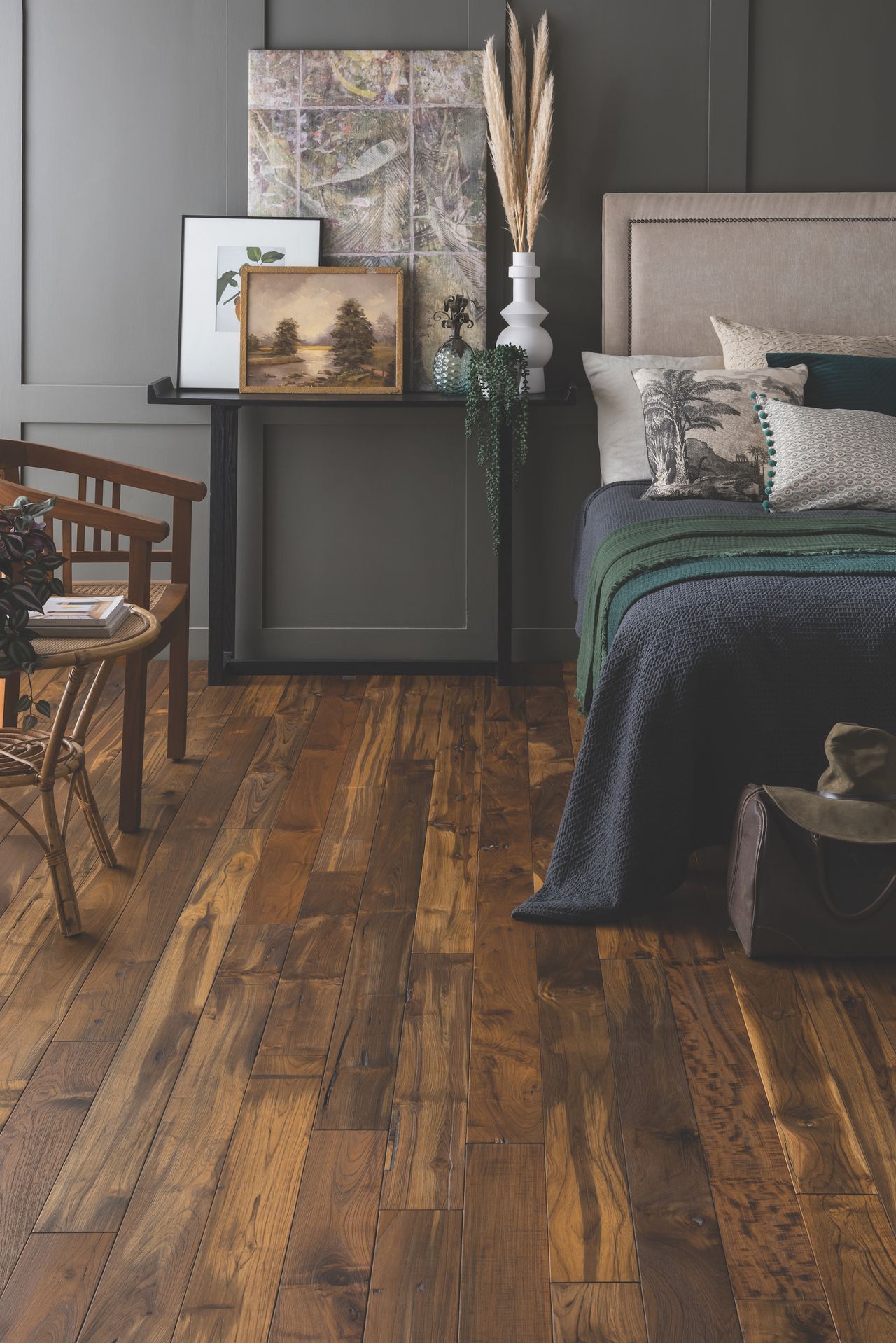

If you’ve never considered the option of radiant floor heating, think about the feeling of a warm floor underfoot when temperatures drop outside and you might be convinced to investigate.
Heated floors could also prove to be a great choice among the types of heating on offer for your home because they can be more efficient than some alternative ways to keep your home warm, distribute heat evenly, and can make the internal environment better for those with allergies.
We’ve put together all the information you need about radiant floor heating systems and the costs, along with expert tips so you can decide if one of the different types is right for your home.
Types of radiant floor heating
There are two types of radiant floor heating systems – sometimes just called floor heating – you can choose from. The first is an electric version, and the second is hydronic, which uses water. Be aware that there are also air-heated radiant floors, but one of these systems isn’t recommended for a home.
How does it work? ‘Whether you prefer hydronic or electric heat beneath your flooring, the concept is the same; floors are heated and the heat is transferred into the rooms above. The flooring mass, usually a slab, absorbs heat then transfers it gently and evenly to the occupants of the home through radiant heat transfer,’ says Joe Crisara, plumbing and HVAC service coach and founder of Service MVP.
‘With both electric and hydronic heating, the thicker the slab, the longer it takes to heat, but with thicker slabs, heat is retained and radiated longer.’
If you’re considering one of these floor heating systems, bear in mind heat-up time. ‘Radiant heat is the most efficient when it comes to sustaining heat for long periods of time, but it is very inefficient in causing immediate changes in temperature,’ explains Joe. ‘It's a slow and steady heat, not an instant warm up.’
Hydronic radiant floors
Hydronic radiant floors are the most popular as well as the most cost-effective choice for heating-dominated climates, according to the US Department of Energy.
‘For hydronic systems, hot water (typically 85 to 130 degrees Fahrenheit) is fed through a series of tubing beneath the finished floor,’ explains Drew Mauro, sales manager of Green Wave Distribution.
The tubing can be embedded in concrete but it’s also possible to fit systems to a subfloor. As for the hot water, it can be supplied by a boiler or a heat pump.
One of the benefits of a hydronic system is that it can be zoned to offer maximum comfort in different areas.
Be mindful that a hydronic system is better fitted if you’re building a new home or making major renovations or building a large addition; it’s not suitable for a small area. Also worth being aware of? ‘Rehab projects will raise the floor levels,’ adds Jimmy Jackson, strategic HVAC advisor at YouthfulHome.com.
Electric radiant floors
Electric floor heating might use heating cables that are built into the floor or matting on a subfloor with a floor covering like tile above.
‘Electric wire cable and mat systems create heat by applying line voltage to a thin, copper wire (electric resistance),’ explains Drew Mauro. ‘Unlike hydronic systems, wire cable systems are suitable for small spaces and generally less expensive. As they run at constant, high temperatures, wire cable systems are limited to certain types of finished flooring such as tile or stone.’
An alternative electric system uses carbon film to create heat. ‘These systems can cover a greater surface area than wire cable systems which results in greater energy efficiency,’ says Drew. ‘Due to their higher surface area coverage, carbon film systems operate at a lower temperature making them safer for materials such as hardwoods and carpets.’
Another electric alternative are carbon polymer systems that use thin plastic mats. ‘Carbon polymer systems can self-regulate, they react to temperature changes such as solar gain from a window or a draft from a door,’ says Drew. ‘The system increases and decreases output in areas as needed which increases energy efficiency.’
Electric floor heating could be ideal for installation in a bathroom, for example, or for a home addition where extending the existing heating system would be impractical.
How much does radiant floor heating cost to install?
Radiant floor heating cost will depend on the system you opt for.
‘A bathroom mat based system can be very economical, $4 to $5 per square foot DIY: for a full home mat system installed by a professional you would be starting around $7; and hydronic systems are customized solutions but typically run from $8 to $20 a square foot,’ says Ryan Koechel, president of FLOOR360.
Is radiant floor heating expensive to run?
Radiant floor heating systems offer an efficiency advantage. ‘Radiant systems don’t lose energy/heat through leaks in ductwork like forced-air systems,’ says Jimmy Jackson. ‘Residual heat will also continue to radiate after the radiant system turns off.’
However, operating costs are dependent on a number of factors. ‘These factors include how well the home is insulated, the number or heating degree days in the area, the cost of fuel or electricity in the area, and the desired temperature set point,’ says Drew Mauro.
‘There are a wide variety of operating cost calculators available but be alert – each of these calculators makes basic assumptions and it is important for the consumer to know what these assumptions are as they may not be applicable.’
How long do heated floors last?
A heated floor can offer a good lifespan. ‘Many electric based radiant systems are warrantied for 15 years but can last much longer,’ says Ryan Koechel.
As for hydronic radiant floors, the pipes might have a lifespan of 25 years and more, but the boiler or other parts of the system will likely need replacement sooner.
Always check what warranty is offered for a floor heating system and its elements before committing to a purchase.
Are heated floors bad for you?
Heated floors aren’t bad for you and, on the contrary, they can improve home life for some people.
‘Forced air systems blow air, dust, and allergens throughout the home. For this reason, radiant heat can be a benefit to people with allergies,’ says Jimmy Jackson.
Does radiant floor heating work best with tile?
A type of floor tile is a great choice as a floor covering. ‘As most tiles such as ceramics and porcelains have thermal-conductive properties, they are excellent at transferring and retaining heat, thus making them an ideal flooring surface for a heating system,’ says Reed Johnson of Jackson Tile Installation. Natural stone tile is also an option.
But while not quite as efficient, other flooring such as vinyl, laminate, engineered wood and even carpet can be suitable. Be sure, though, to check that the flooring warranty covers use with floor heating.
Join our newsletter
Get small space home decor ideas, celeb inspiration, DIY tips and more, straight to your inbox!

Sarah is a freelance journalist and editor writing for websites, national newspapers, and magazines. She’s spent most of her journalistic career specialising in homes – long enough to see fridges become smart, decorating fashions embrace both minimalism and maximalism, and interiors that blur the indoor/outdoor link become a must-have. She loves testing the latest home appliances, revealing the trends in furnishings and fittings for every room, and investigating the benefits, costs and practicalities of home improvement. It's no big surprise that she likes to put what she writes about into practice, and is a serial house revamper. For Realhomes.com, Sarah reviews coffee machines and vacuum cleaners, taking them through their paces at home to give us an honest, real life review and comparison of every model.
-
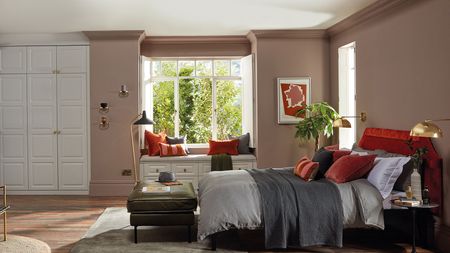 Anthony Carrino reveals $8 product all renters need to help keep their home warm
Anthony Carrino reveals $8 product all renters need to help keep their home warmThe designer known for his HGTV show 'Kitchen Cousins' shares his window insulation tip to keep your home warm
By Millie Hurst Published
-
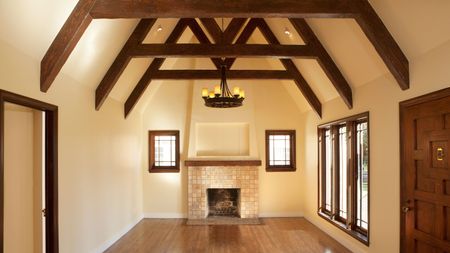 A total guide to vaulted ceilings – pros, cons, costs and more
A total guide to vaulted ceilings – pros, cons, costs and moreWeigh up the pros, cons and costs of vaulted ceilings to decide whether they are the right fit for your home.
By Sarah Warwick Published
-
 17 ceiling ideas to add wow factor from above
17 ceiling ideas to add wow factor from aboveTransform your fifth wall with ceiling ideas that are sure to add character to every room. From beams and paint to wallpaper and more unique ways to cover ugly or dated ceilings, there's so much in the way of inspiration.
By Holly Phillips Published
-
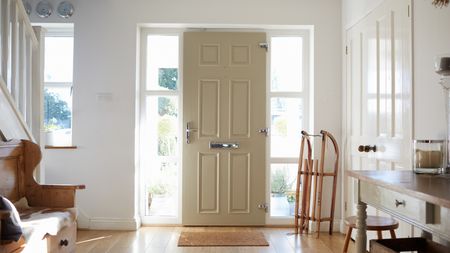 5 ways to stop drafty doors fast — seal air leaks with help from the experts
5 ways to stop drafty doors fast — seal air leaks with help from the expertsLearn how to stop drafty doors if you're feeling a chill. Sealing air leaks is easily done DIY with quick fixes from home experts.
By Anna K. Cottrell Last updated
-
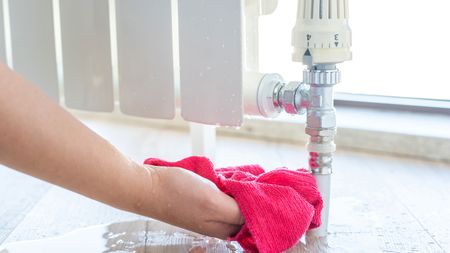 Leaking radiators: why it happens and how to fix it
Leaking radiators: why it happens and how to fix itIf you've got a leaking radiator, you should try and resolve the issue quickly. This is why it's happening and how to fix it.
By Sarah Warwick Published
-
 How to keep scrolling for DIY inspo – without losing sleep
How to keep scrolling for DIY inspo – without losing sleepBecause there's a time and a place for TikTok. And just before bed isn't the one
By Millie Hurst Published
-
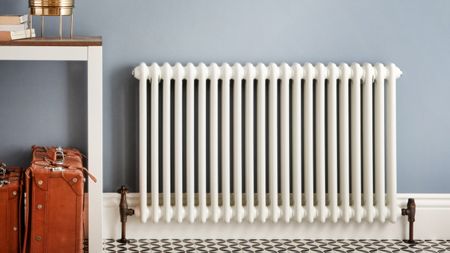 How much does it cost to replace a radiator?
How much does it cost to replace a radiator?Everything a homeowner needs to know about what it costs to replace a radiator and when to do it
By Carol J. Alexander Last updated
-
 How to balance radiators – a simple step-by-step guide
How to balance radiators – a simple step-by-step guideSome of your radiators slow to heat up? Learn how to balance radiators and solve the problem
By Sarah Warwick Last updated